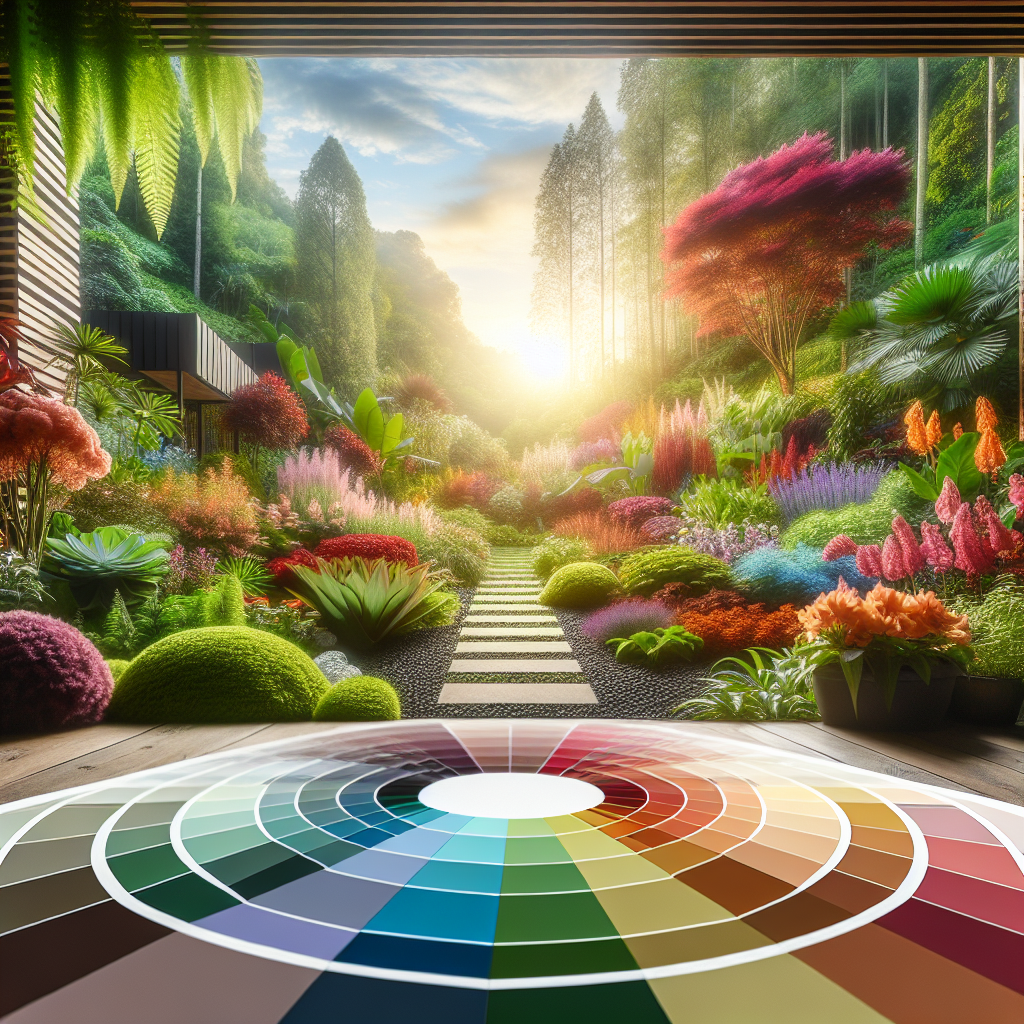Landscaping is an art form that can transform a mundane outdoor space into a breathtaking paradise. At the heart of this transformation lies the understanding of color theory. By choosing the right plant combinations, you can create stunning visuals, evoke emotions, and even influence behavior in your outdoor areas. This article will delve into the principles of color theory in landscaping and provide practical tips on selecting harmonious plant combinations.
Understanding Color Theory
Color theory is the study of how colors interact and how they influence our perceptions and emotions. In landscaping, this knowledge helps you make informed decisions while designing your outdoor environment. By grasping the basics of color theory, you can create a landscape that not only looks great but feels great too.
The Color Wheel: Your Best Friend in Design
The color wheel is a vital tool in color theory. It consists of primary, secondary, and tertiary colors, and it helps identify color relationships. Here are the categories you should know:
- Primary Colors: Red, blue, and yellow are the building blocks of all other colors.
- Secondary Colors: These are made by mixing primary colors (e.g., green, orange, and purple).
- Tertiary Colors: These are formed by mixing a primary color with a secondary color (e.g., red-orange, blue-green).
Color Harmony: The Art of Combinations
In landscaping, achieving color harmony is essential for creating a visually appealing design. Here are a few key color harmonies to consider:
-
Complementary Colors: This scheme involves using colors that are opposite each other on the color wheel (e.g., blue and orange). They create a vibrant contrast that can energize a space.
-
Analogous Colors: Colors that are next to each other on the wheel (e.g., yellow, yellow-orange, and orange) offer a more serene, harmonious look. This combination is perfect for a tranquil garden.
- Triadic Colors: This scheme uses three colors that are evenly spaced around the wheel (e.g., red, blue, and yellow). It provides a balanced composition that’s lively yet cohesive.
Emotions and Color in Landscaping
Colors evoke emotions, and understanding this can help you create the desired atmosphere in your garden. Here’s how different colors can influence feelings:
-
Red: Passion, excitement, and energy. Use red flowers like roses to attract attention.
-
Blue: Calm, tranquility, and relaxation. Incorporate blue hydrangeas to create a peaceful retreat.
-
Yellow: Happiness and warmth. Sunflowers can brighten up any space and uplift spirits.
-
Green: Renewal and growth. Green foliage acts as a grounding element in your design.
- Purple: Luxury and creativity. Purple blooms like lavender can add a touch of elegance.
Practical Tips for Choosing Plant Combinations
Creating a stunning landscape requires thoughtful consideration of plant combinations. Here are some practical tips to guide your selection:
1. Consider Seasonal Changes
Plants bloom at different times, and their colors can change with the seasons. Select a mix of perennials, annuals, and evergreens to ensure your garden remains vibrant year-round.
2. Pay Attention to Scale
When choosing plants, consider their size and growth habits. Taller plants can serve as a backdrop for shorter ones, creating depth and dimension. Make sure to balance large foliage with delicate flowers for an engaging contrast.
3. Build a Focal Point
In any landscape, a focal point draws the eye. Use bold, vibrant colors like red or purple for a single specimen plant (like a tree or a striking flower) that stands out among the green foliage.
4. Create Texture and Layers
Incorporating a variety of leaf shapes and sizes adds texture to your landscape. Pair plants with broad leaves next to those with fine or feathery foliage for a dynamic interplay of forms.
5. Don’t Forget the Hardscaping
In addition to plants, remember that hardscapes such as paths, stones, and walls can introduce color. Choose materials that complement your plant palette to create a holistic design.
Conclusion
Color theory in landscaping is a powerful tool that can enhance the beauty and emotional impact of your outdoor spaces. By understanding the interplay of colors and how they affect moods, you can select plant combinations that create harmony, balance, and beauty in your garden.
As you embark on your landscaping journey, remember to have fun with it! Experiment with different color schemes and plant combinations to find what resonates with you. A well-curated landscape not only boosts curb appeal but also serves as a personal sanctuary where you can relax and enjoy nature’s beauty.
Final Thoughts
Creating a colorful landscape is about more than just choosing pretty plants; it’s about crafting a living work of art. So, roll up your sleeves, tap into the principles of color theory, and let your garden bloom in harmony with your vision. Happy gardening!


